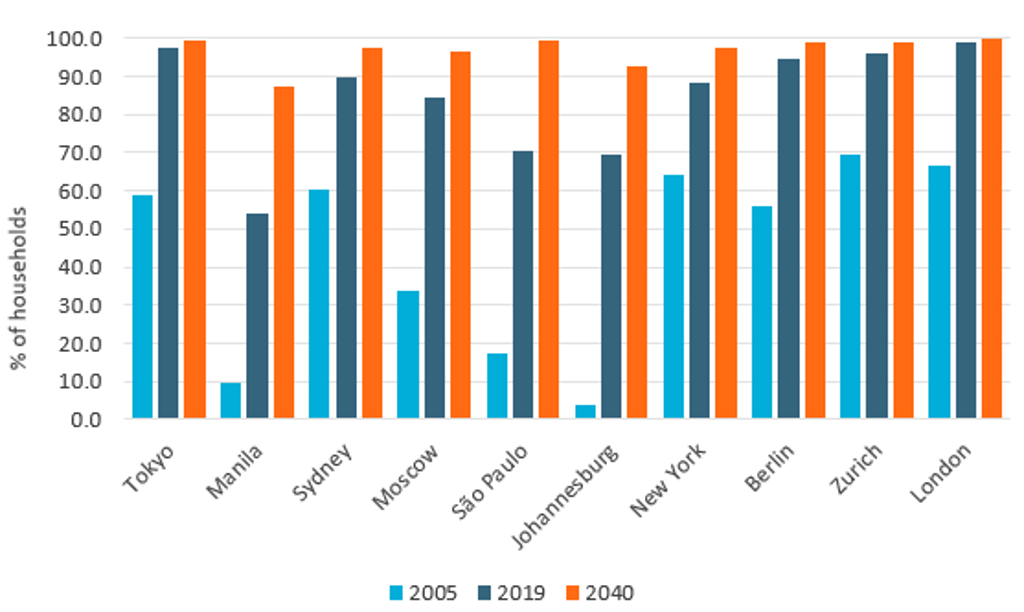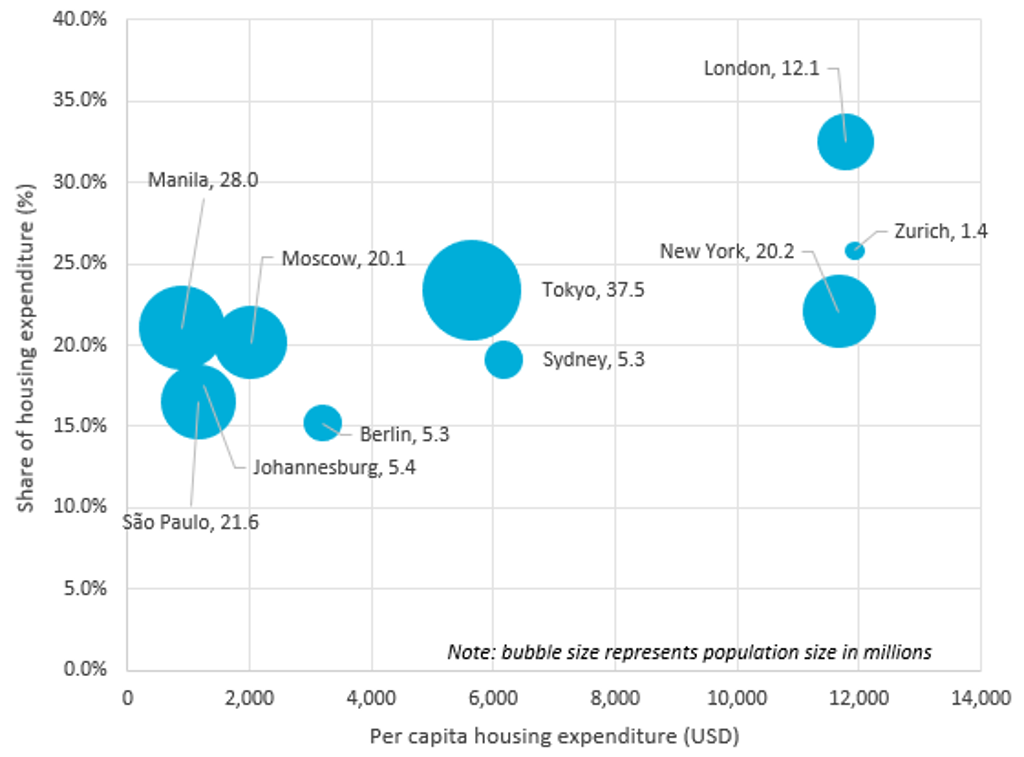Coronavirus (COVID-19) has taken a stranglehold on the world since 11 March 2020 when a global pandemic was called by the World Health Organization. The pandemic has called into question the lure of cities as places to live and work – and questions are lingering as to whether COVID-19 could manifest in a slowdown of urbanisation. While that may be true in the short-run due to the challenges involved in fighting the pandemic, it is unlikely that urbanisation will be heavily impeded over the long term.
Remote work, high cost of living and safety fears could push people to reconsider urban living
Prior to COVID-19, the shift to remote work was slow and gradual. It still occupied a small share of total work time, with firms commonly allowing employees to work from home a few days per week. But this has changed since the start of the pandemic in March 2020 when companies ordered their employees to work remotely to reduce transmission.
This has been aided by technological advancements with video conferencing tools including Microsoft Teams and Zoom; virtual private networks and the increasing ubiquity of internet access at home, providing companies with all the necessary infrastructure to maintain business continuity. Remote working is likely to continue with Facebook and Google having already permitted home-working until mid-2021.
Household Access to the Internet, 2005/2019/2040
Source: Euromonitor International from national statistics/International Telecommunications Union (ITU)
Secondly, cities are renowned for their high cost of living. For example, in 2019, Londoners spent 32% of their expenditure basket on housing compared with 23% in the remaining non-major urban areas of the country. Remote work has reduced the cost of distance meaning proximity to one’s workplace may no longer become a necessity.
It thereby has increased the draw of remote work in smaller urban areas or rural regions where living costs are significantly lower. It also helps avoid some of the pitfalls of urban life, namely congestion, high crime rates and excessive air and noise pollution.
Per Capita and Share of Consumer Expenditure on Housing and Total Population, 2019
Source: Euromonitor International from national statistics/UN
Finally, COVID-19 has thrown public health safety into question especially among people with underlying health conditions. For example, access to public transport, restaurants, leisure and healthcare services have become limited or become burdened with restrictions as governments are keen to restrict large gatherings of people.
For example, in mid-July 2020, Barcelona decided to shut down all cinemas, bars and nightclubs due to a spike in COVID-19 cases. The lure of cities lies in providing access to public amenities, entertainment and mobility services but when this ceases to exist, cities can quickly lose appeal.
It is not the end for cities
While there are several arguments in favour of parting with the city, it is unlikely that cities will witness immense de-population. Firstly, not all companies can provide remote working solutions for employees due to the nature of work (such as manufacturing or research and development).
Secondly, a vaccine for COVID-19 could sort out many of the problems of the pandemic. It is important to remember that this is not the first pandemic (and epidemic) to have impacted the world and countries have managed to deal with the Bird Flu and Swine Flu epidemics and the Spanish Flu pandemic of 1918.
Thirdly, there is not enough evidence to suggest that living in cities raises the risk of contracting a viral infection such as COVID-19. It may be that better preparation in the future could help in controlling and mitigating the risk of infection. Cities such as Seoul and Taipei have been heralded as some of the best performers in controlling the spread of COVID-19.
Finally, it is also important to remember that agglomeration economics or in layman’ terms, the concentration of people into one location, bears productivity gains. In a rapidly ageing society, ensuring productivity growth is vital to the economic health of countries and this is ultimately a drawback of remote work.
Cities will pay closer attention to hygiene
While it would be wrong to suggest that COVID-19 will usher an immense de-population of urban areas, the pandemic may alter life and work. For example, remote work may become more ubiquitous among companies, but it is unlikely to completely overhaul office-based work, manifesting in a blending of the two employment modes in tandem.
But what is likely to change our attitudes to health, safety and hygiene. Hand sanitation may become more frequent, at least in the short to medium run, as seen with restaurants, shops and bars in cities providing disinfection facilities. Also, the large array of innovative technologies, such as Ultraviolet-C lighting may become more widespread as tools for disinfecting public spaces.
A study by Columbia University Irving Medical Centre carried out earlier in 2020 confirmed the efficiency of UC-C lighting which was able to kill 99.9% of COVID-19 viruses at a wavelength safe for humans.
It is worth remembering that cities are cauldrons of economic growth. In 2019, the world’s 1,000 major cities controlled 61% of the world’s GDP. Preserving the economic might of cities will be a top agenda and every attempt will be made to ensure they do not succumb to the ill effects of future pandemics.


